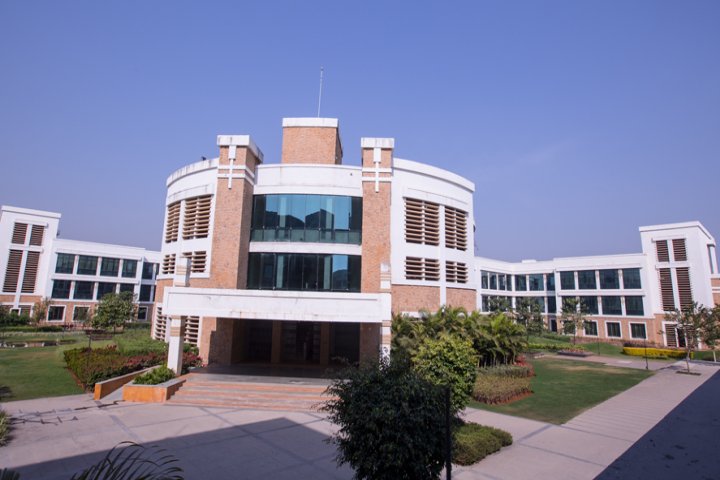What is Apparel Design
Design is all about being creative, but your role as a designer necessitates using both your left and right brains, as it entails product development and design. You must understand all aspects of your business as a fashion entrepreneur. Everything begins with design, conceptualization, and creative execution of the vision. Clothing design is the first step in the product development process. You are conceptualising your idea and establishing the direction for function, quality, and aesthetic during the design stage. Market research is critical to the success of any design.
The Apparel Designing course is designed to provide an extensive overview of developing various trendy apparel styles through design, fabric knowledge, colour and texture coordination, and quality and fit monitoring. It is an intriguing and challenging course that helps students bring out their creative ability, sensitivity, style, and originality and translate them into a visual representation.
Apparel Design Course Highlights
Particulars | Values |
Branch Name | Apparel Design |
Degree | B.Des, M.Des, B.Sc, M.Sc |
Duration | B.Des (4 years) M.Des (2 years) B.Sc. (3 years) M.Sc. (2 years) |
Eligibility | B.Des and B.Sc. (10+2 with any specialisation from any recognised board or university) |
M.Des and M.Sc Bachelor's degree | |
Admission Process | Admission is based on the merit score in entrance exams |
Top Entrance Exams | |
Course Fees | Rs 20,000 to Rs 3,00,000 |
Top Colleges | Asian Academy of Film and Television, National Institute of Fashion Technology, Parul University, and Army Institute of Fashion Design |
Career options | Stylist, Fashion Designer, Retail Manager, Personal Shopper, Retail Buyer, and Makeup Artist |
Average Salary | Rs 4,30,000 |
Recruiting Companies | Raymond Ltd, ColorPlus Fashions, Adidas, Allen Solly, and Lifestyle |
Specialisation or Similar one
Apparel designers are creative people who create, design, and sell clothing and accessories. They specialise in one field of work, studying and monitoring changes in trends and industry standards. Design students can take classes in their area of interest and look for relevant work after graduation.
B.Des in Apparel Design | M.Des in Apparel Design |
M.Des in Apparel Design | B.SC in Apparel Design |
Eligibility Criteria (UG & PG) of Apparel Design
Aspirants who register for the designing entrance exam should be well-versed in all aspects of the examination and course. Candidates should be aware of the minimum qualifications, such as age, academic grades, and entrance exam cut-off marks. Candidates who meet the criteria may be admitted to top colleges or universities.
Eligibility Criteria for UG and PG courses
Students should have passed 10+2 in any discipline from the recognised board or university. The candidates should have all academic certificates while registering for the course in top colleges or universities.
A candidate should score at least 50 per cent marks in the 12th class.
A candidate should score more than 50 per cent marks in the bachelor's in Architecture, Interior Design, and Fine Arts.
A candidate should score at least minimum cut off marks in the entrance examinations.
Top Entrance Exams for UG Courses
There are a few entrance exams that help the candidate to get a seat in the top colleges or universities. Candidates have to score the minimum cut off marks based on their reservation category.
AIEED: The full form of AIEED is All India Entrance Examination for Design. ARCH or Academy of Design conducts the All India Entrance Examination for Design for admission to Undergraduate and Postgraduate Design programs in design.
NIFT: NIFT is one of the top fashion and design schools. NIFT conducts entrance exams for a wide range of undergraduate and graduate programmes. The National Institute of Fashion Technology (NIFT) is based in Delhi and has campuses in 15 major Indian cities.
Top Entrance Exams for PG Courses
CEED: The Common Entrance Examination for Design (CEED) is a joint entrance examination for post-graduate studies in technological design. The exams are held each year at all Indian Institutes of Technology and Science.
College Predictors VIEW ALL
Scope of Apparel Design in India and Abroad
A fashion designer's job is to create costumes and other lifestyle items by combining fashion with creativity, imagination, and natural beauty. Fashion design evolves over time and from place to place, reflecting a wide range of social and cultural attitudes. Designers create styles and designs for specific clients who want personalised plans for their clothing and accessories, in addition to general designs. Students interested in working in the fashion, manufacturing, or textile industries, as well as those interested in learning more about fashion, should consider enrolling in the B.Des. Fashion Design programme.
Graduates can work in a variety of sectors within the fashion industry, including but not limited to apparel. Designers are the most imaginative people who, using their unique ideas, create a wide range of designs and see them through to completion.
Course Fees Apparel Design
| Minimum Fees | Maximum Fees | |||
|---|---|---|---|---|
| Private | Government | Private | Government | |
| UG | ||||
| DIPLOMA | ||||
Course Subjects
The Apparel Design subjects are similar to the fashion design subjects in UG and PG. In UG the course covers three years with six semesters, whereas PG covers two years with four semesters. Subjects may vary based on the specialisation chosen by the candidates.
Subjects covered in UG
Apparel Standard & Quality Control | Concept Designing |
Apparel Production Techniques | Fabric Manufacturing and Dyeing |
Textile & Apparel Testing | Apparel Computer Aided Design |
Apparel design For Fashion | Material Optimizing for Fashion Products |
Design Management | Fashion Accessory |
Subjects covered in PG
Introduction to Design | Visual Design |
Fashion Supply Management | Design Context |
Inter Design Studies | Product Detailing |
Thesis Project | Media Studies |
Merchandising | Research and Methodology |
Careers in Apparel Design
Stylist | The stylist provides fashion advice for choosing and coordinating outfits for the models and actors for the photo shoots in the film industry and television industry. He or she also chooses the properties that can be used for the photo shoots. |
A fashion designer creates and aids in the production of clothing, shoes, and accessories, as well as identifying trends and selecting styles, fabrics, colours, prints, and trims for a collection. | |
A Retail manager is in charge of stores that sell all designer fabrics and clothing to the public. He or she will be responsible for the stock management, staff, and sales in the store. | |
Apparel Designer | An Apparel Designer administers both conceptualising and creating clothes and related items. The primary responsibilities of an apparel designer are to stay updated with the current fashion trends and to forecast future ones. He or she will design the clothes based on the current trends or market demands. |
A Quality Manager is in charge of developing and implementing inspection, testing, and evaluation methods to ensure that products adhere to company standards. He prepares reports by gathering data on inspections or other aspects such as production line cleanliness, which is then thoroughly analysed. |
Upcoming trends
Apparel designers are increasing day to day and it is also becoming difficult to continue producing a large number of products and sell them in the market. In today's fast-changing modern environment, brands that pick up speed and become more responsive to customer needs are more likely to win. Here are a few trending technologies that create changes in the fashion industry.
Artificial intelligence: Applications assist both customers and manufacturers in determining fit, which makes customers happier and reduces the industry's environmental impact. AI is used by designers to create fabrics and garments, and by consulting firms to forecast trends for their manufacturing clients.
Novel Fabrics: Novel fabrics are undoubtedly the future of fashion as another way for designers to differentiate themselves and appeal as a sustainable option. All of the evidence suggests that eco-leather is not a very sustainable option. Startups such as Modern Meadow are combating this by producing lab-grown leather that does not harm animals. Similarly, companies such as Bolt Threads and EntoGenetics are developing super-strong spider silk.
Mobile Commerce: Mobile Commerce is advancing at a rapid pace. Mobile commerce is the ultimate technological tool, from instance shopping to smart wallets. It has not only influenced our daily lives, but it has also become one of the fastest-growing segments of eCommerce.
Average Salary
The salary for apparel design completely depends on the skills that a candidate poses for designing the clothes. The salary package for the junior will be starting from Rs 15,000 and will be increasing based on experience. The senior designer will be earning more than 4,00,000 per annum.
Stylist | Rs 29,575 per year |
Fashion Designer | Rs 3,76,190 per year |
Retail Manager | Rs 4,00,000 per year |
Apparel Designer | Rs 4,30,000 per year |
Quality Manager | Rs 7,00,000 per year |
Course Curriculum for Apparel Design
The course is of two levels UG and PG. In UG, there are three years with six semesters and PG they do have two years with four semesters. Candidates are going to learn the subject knowledge from the curriculum designed by colleges and universities. The subjects in this course help the students to know how to design clothes and fabrics. The Apparel Designing course curriculum is intended to teach students technical skills. The following are some common topics covered in an undergraduate course in Apparel Design.
Designing Methods
Material Optimization
Draping
Fashion Art and Design
Child wear Design
Men’s wear Design
Visual Communication
Popular Apparel Design Entrance Exams in India
Popular Apparel Design Colleges in India VIEW ALL
Frequently Asked Questions (FAQs)
Question: What is the course duration for apparel design?
Answer :
Candidates with a bachelor's degree in Apparel Design can expect to start their career three to four years after graduation. However, career advancement in this field is also determined by the specialisation chosen.
Question: What are the skills required for apparel design?
Answer :
To become a fashion designer, you must have skills such as creativity and proactivity, interpersonal skills, a desire to succeed, good sewing skills, communication skills, business skills, leadership skills, and the ability to adapt to changing trends.
Question: How to get admission into the top colleges for apparel designing courses?
Answer :
Many colleges hold entrance exams to select students for admission to their programmes. If they meet the eligibility requirements, students can sit for entrance exams to gain admission to an Apparel Design course.
Question: Who are the top recruiters for the Apparel Designing course?
Answer :
The top recruiters for the apparel industry are BIBA, Allen Solly, Raymond, Zara, and Peter England.
Question: Is apparel design a good course?
Answer :
Apparel Designing is a good career path for those who are artistic and creative, as well as have good communication and decision-making abilities. Aspirants interested in pursuing an Apparel Designing course have numerous career options.
Question: What are the career opportunities after apparel design?
Answer :
There are many career opportunities after graduation in apparel designers those are fashion designer, stylist, apparel designer, and quality manager.
Question: What are the entrance examinations for Apparel Design?
Answer :
Candidate who wants to pursue this course will need to attempt a few national level entrance examinations like AIEED, CEED, and NIFT.
Question: What are the specialisations in Apparel Design?
Answer :
Apparel designers also known as Fashion designers, are creative individuals who design, create, and sell clothing and accessories. They specialise in one field of work, studying and monitoring changes in trends and industry standards.
Question: Who is eligible for pursuing an Apparel Design course?
Answer :
Candidates must have passed their class 12 examination and be certified by a recognised board in order to study fashion design at the undergraduate level.
Question: What is Apparel Design?
Answer :
Textile and Apparel Design, also known as Fashion Design, connects the physical properties of textiles to our human desire for functional and fashionable clothing and home accessories.















